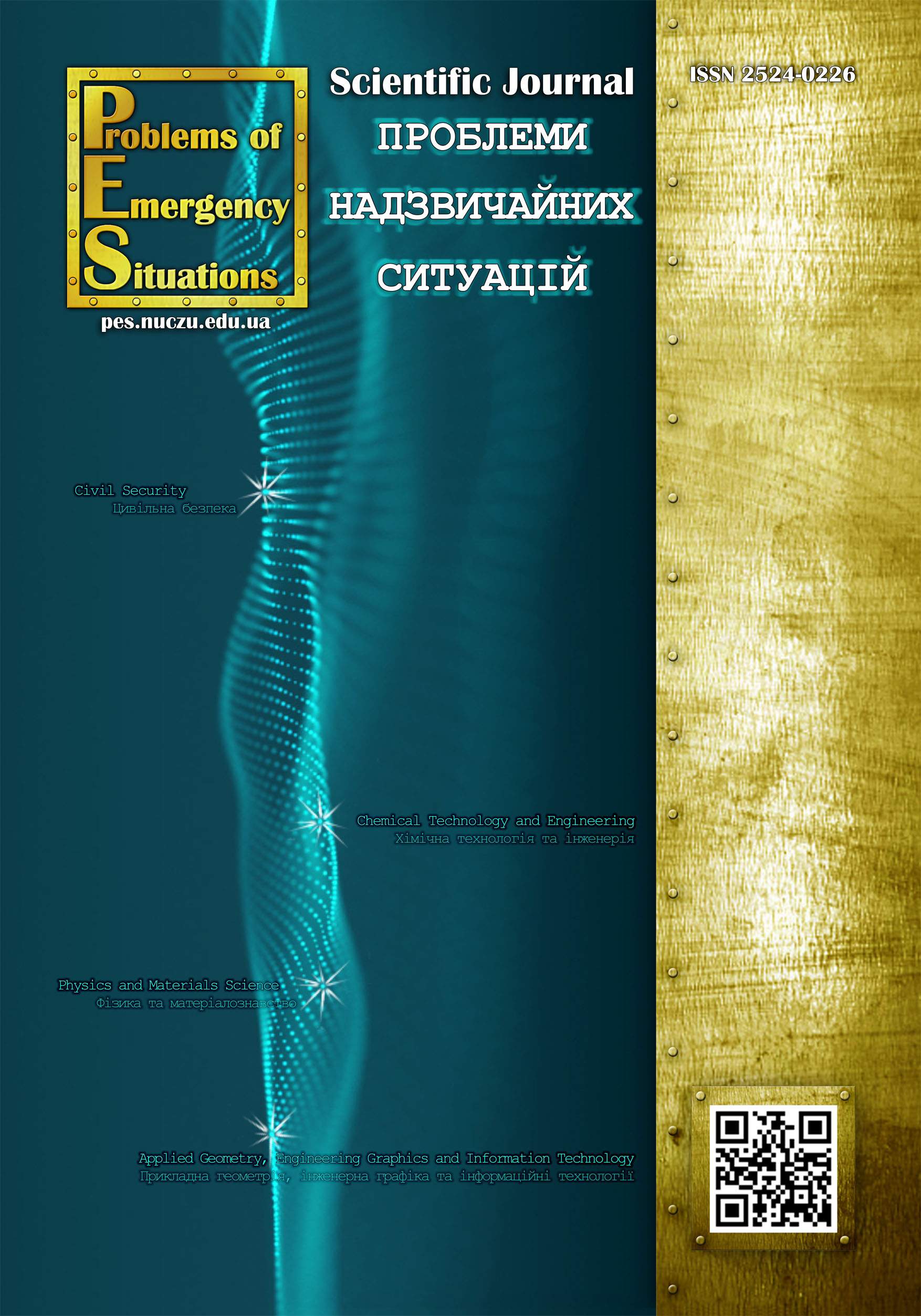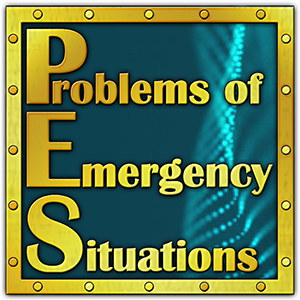Model of forced deposition of heavy dangerous gases
Lesko Andrei
National University of Civil Protection of Ukraine
https://orcid.org/0009-0003-2053-2362
Kulakov Oleg
National University of Civil Protection of Ukraine
https://orcid.org/0000-0001-5236-1949
Serhii Domoleha
Research Institute of Military Intelligence
http://orcid.org/0009-0000-9796-9181
Manzhura Svyatoslav
National Academy of the National Guard of Ukraine
http://orcid.org/0000-0002-9258-9320
DOI: https://doi.org/10.52363/2524-0226-2024-40-4
Keywords: gas density, gas sorption, forced deposition, heavy gases, forecasting the consequences of an accident, Navier-Stokes equation
Аnnotation
A model of diffusion spreading in the atmosphere of dangerous chemicals with a density greater than atmospheric air is developed. The model was created by solving the Navier-Stokes equations with appropriate boundary conditions. The peculiarity of the obtained model is the consideration of the process of forced deposition of gas by a finely dispersed liquid flow of different intensity during gas propagation. In this case, deposition occurs due to the processes of gas sorption by liquid droplets. It is established that the propagation of heavy gases in the atmosphere shows signs of fluid flow, and the resulting model is a transitional option between systems of gas diffusion models and hydrodynamic models of fluid flow. Taking into account the assumption of gas incompressibility due to the significant difference in sound speeds between the gas under study and air allowed us to obtain a simplified view of the transient regime. The modelling results for chlorine emissions from a point source showed that the effect of wind speed is much smaller compared to ammonia, which increases the importance of the contribution of the diffusion process. The resulting model allows predicting the size of the chemical damage zone in the event of accidents involving the release of heavy gases with their active deposition by stationary and mobile sprayers. In practice, water curtains at the technological openings of heavy gas storage and operation facilities can be considered as stationary sprayers. The work of rescue units at the incident site can be considered as mobile sprayers. Refinement of the results of forecasting the consequences of emergencies involving the release of hazardous gases will improve the accuracy of the design of the safety system at such facilities and help in making effective management decisions in the elimination of emergencies of this nature.
References
- Global Hazards Weekly Bulletin. Public Health England. London. (2024). Available at: https://www.met.reading.ac.uk/~sgs02rpa/extreme.html
- Toxic gas at Birmingham water treatment plant sends 55 workers to hospitals. Available at: https://www.al.com/news/birmingham/2019/02/multiple-ambulances-called-in-hazmat-incident-at-birmingham-water-treatment-plant.html
- Talhofer, V., Hošková-Mayerová, Š. (2019). Method of Selecting a Decontamination Site Deployment for Chemical Accident Consequences Elimination: Application of Multi-Criterial Analysis. ISPRS International Journal of Geo-Information, 8(4), 171. doi: 10.3390/ijgi8040171
- Leelossy, A., Jr, F., Izsak, F., Havasi, A., Lagzi, I., Meszaros, R. (2014). Dispersion modeling of air pollutants in the atmosphere: a review. Central European Journal of Geosciences, 257–278. doi: 10.2478/s13533-012-0188-6
- Hoinaski, L., Franco, D., Lisboa, H. (2016). Comparison of plume lateral dispersion coefficients schemes: Effect of averaging time. Atmospheric Pollution Research, 7, 134–141. doi: 10.1016/j.apr.2015.08.004
- Tatarinov, V., Prus, U., Kirsanov, A. (2019). Decision support software for chemical accident elimination management. AIP Conference Proceedings, 2195, 020076. doi: 10.1063/1.5140176
- Martínez-García, M., Zhang, Y., Suzuki, K., Zhang, Y. D. (2021). Deep Recurrent Entropy Adaptive Model for System Reliability Monitoring. IEEE Transactions on Industrial Informatics, 17(2), 839–848. doi: 10.1109/TII.2020.3007152
- Khan, F., Rathnayaka, S., Ahmed, S. (2015). Methods and models in process safety and risk management: Past, present and future. Process Safety and Environmental Protection, 98, 116–147. doi: 10.1016/j.psep.2015.07.005
- Kustov, M., Melnychenko, A., Basmanov, O., Tarasenko, O. (2022). Modeling of gas sorption process by dispersed liquid flow. Scientific journal «Materials Science Forum» Switzerland: Trans Tech Publications Ltd, 1068, 239–247. doi: 10.4028/p-jdydlo
- Melnichenko, A., Kustov, M., Basmanov, O., Tarasenko, O., Bogatov, O., Kravtsov, M., Petrova, O., Pidpala, T., Karatieieva, O., Shevchuk, N. (2022). Devising a procedure to forecast the level of chemical damage to the atmosphere during active deposition of dangerous gases. Eastern-European Journal of Enterprise Technologies, 1(10(115)), 31–40. doi: 10.15587/1729-4061.2022.251675
- Chlorine. Available at: https://en.wikipedia.org/wiki/Chlorine














